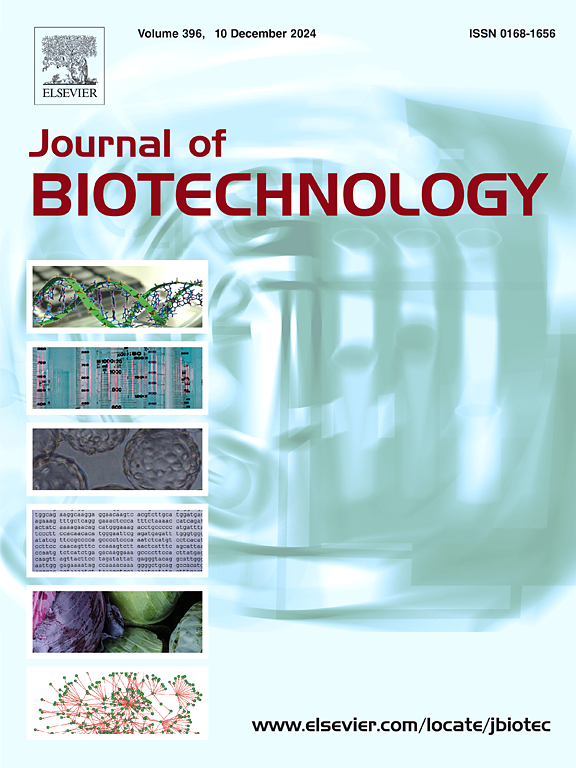An integrated purification and immobilization strategy for ELP-fusion β-glucosidase by its thermosensitivity and hydrophobicity
IF 3.9
2区 生物学
Q2 BIOTECHNOLOGY & APPLIED MICROBIOLOGY
引用次数: 0
Abstract
In the field of biocatalysis, enzymes play a crucial role. However, they are faced with many challenges in practical applications, such as poor operational stability, high production costs and difficulties in recycling. Therefore, the efficient separation, purification and immobilization of enzymes are key to realize their industrial application. In this experiment, Elastin-like polypeptides (ELPs) tags with different sequence lengths, (VPGVG)n = 30, 40, 50, were designed to be fused with β-glucosidase (Glu) for expression. The temperature-responsive properties of ELPs have been utilized to achieve efficient separation and purification of recombinant enzymes, significantly improving the purification efficiency. Furthermore, the immobilization of Glu was achieved by enhancing the adsorption force between the recombinant enzyme and the carrier material based on the hydrophobicity of the ELPs. Compared to the free Glu, the immobilized Glu exhibited excellent thermal stability, pH stability, reusability and storage stability. In the catalytic hydrolysis of carboxymethyl cellulose (CMC), the glycosylation rate was increased by 27.26–28.05 % due to the synergistic action of immobilized Glu and cellulase. Therefore, this study developed an integrated method combining separation, purification with immobilization based on recombinant enzymes with ELPs, aiming to enhance the industrial application of immobilized enzymes.
利用elp融合β-葡萄糖苷酶的热敏性和疏水性进行纯化和固定化。
在生物催化领域,酶起着至关重要的作用。但在实际应用中面临着运行稳定性差、生产成本高、回收困难等诸多挑战。因此,酶的高效分离、纯化和固定化是实现其工业化应用的关键。本实验设计不同序列长度的弹性蛋白样多肽(Elastin-like polypeptides, ELPs)标签,(VPGVG)n=30、40、50,与β-葡萄糖苷酶(Glu)融合表达。利用ELPs的温度响应特性,实现了重组酶的高效分离纯化,显著提高了纯化效率。此外,利用elp的疏水性,通过增强重组酶与载体材料之间的吸附力,实现了Glu的固定化。与游离Glu相比,固定化后的Glu具有良好的热稳定性、pH稳定性、可重复使用性和储存稳定性。在羧甲基纤维素(CMC)的催化水解中,固定化Glu与纤维素酶的协同作用使糖基化率提高了27.26% ~ 28.05%。因此,本研究开发了一种基于elp重组酶的分离、纯化与固定化相结合的综合方法,旨在提高固定化酶的工业应用。
本文章由计算机程序翻译,如有差异,请以英文原文为准。
求助全文
约1分钟内获得全文
求助全文
来源期刊

Journal of biotechnology
工程技术-生物工程与应用微生物
CiteScore
8.90
自引率
2.40%
发文量
190
审稿时长
45 days
期刊介绍:
The Journal of Biotechnology has an open access mirror journal, the Journal of Biotechnology: X, sharing the same aims and scope, editorial team, submission system and rigorous peer review.
The Journal provides a medium for the rapid publication of both full-length articles and short communications on novel and innovative aspects of biotechnology. The Journal will accept papers ranging from genetic or molecular biological positions to those covering biochemical, chemical or bioprocess engineering aspects as well as computer application of new software concepts, provided that in each case the material is directly relevant to biotechnological systems. Papers presenting information of a multidisciplinary nature that would not be suitable for publication in a journal devoted to a single discipline, are particularly welcome.
 求助内容:
求助内容: 应助结果提醒方式:
应助结果提醒方式:


